ID Quiz 1.1: Polygonia Species
Some of the most interesting butterflies in these parts are the various species of the genus Polygonia. The two most common species in the NJ-DE-PA area are the Question Mark (Polygonia interrogationis) and Eastern Comma (Polygonia comma) butterflies. Both species are very similar on both the dorsal and lateral faces of their bodies, but with subtle differences. On of the strongest identifiers are the unique markings on the lateral sides of the wings, as shown below.
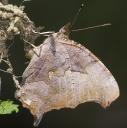 Commas have a crooked comma-shaped marking on the wing, as shown in the picture on the right. Question Marks, on the other hand, actually have a shape that looks very much like a question mark, although the image above doesn’t show it very well. A better example is shown at left. One note: although the lateral look of the wings are very different in the images above, in reality both species have a similar range of colors, striping, etc. Either species could look like the butterfly on the left or the one on the right.
Commas have a crooked comma-shaped marking on the wing, as shown in the picture on the right. Question Marks, on the other hand, actually have a shape that looks very much like a question mark, although the image above doesn’t show it very well. A better example is shown at left. One note: although the lateral look of the wings are very different in the images above, in reality both species have a similar range of colors, striping, etc. Either species could look like the butterfly on the left or the one on the right.
If you get a look at the dorsal side of these butterflies, they are also very similar in appearance with only a small, subtle but telling clue as to the identity – the spots on the forewing. They have similar features and colors, but the Question Mark has an additional spot along the arc of the wing that differentiates it from the Comma, a sixth ‘subapical mark’. See below for pictures of the butterflies, as well as a detail of the wings. This can be tough to see when they are moving a bit, but once they slow down, that subapical mark is pretty easy to spot.
Morphs
To make things even more interesting, both Question Marks and Eastern Commas have two morphs – the “Orange” and “Black” forms. The black forms are also known as the “Summer” forms and are more frequent in spring and summer; the orange forms are more common in later months and into the Fall, when commas and question marks are among the last butterflies still flying around. See the image to the right for examples of both forms of the Eastern Comma.
Further Polygonia Fun
To make it even more interesting, the occasional visit by a couple of other similar species makes identification even more fun. The Green Comma (Polygonia faunus) is an uncommon visitor to New Jersey, and is more similar to the Eastern Comma than the question mark. There are some field marks which can be used to identify them, but even those are tough to actually see when one is out in the field. The biggest one is the ‘double-spot’ at the middle of the 5 marks along the dorsal wing; they also have a much more pronounced and jagged ‘comma’ on the lateral wing. Additionally, Green Commas have a much more noticeable set of spots along the trailing edge of the hindwings and a more ‘jagged’ appearance to their wings (a good example of the ‘anglewings’ that these species are known for). On the lateral side of the wing, you can also see an evident blue-green sub-marginal band – but this is something that is really hard to tell except in the best of light. Luckily – well, at least in terms of ID – Green Commas are relatively rare as far down as my area, so I rarely have to make the ID; but it makes for an even bigger thrill when I do see one.
for more INFORMATION
• Pictures of QUESTION MARKS on Flickr
• Pictures of EASTERN COMMAS on Flickr
• ID/Compare set on Flickr

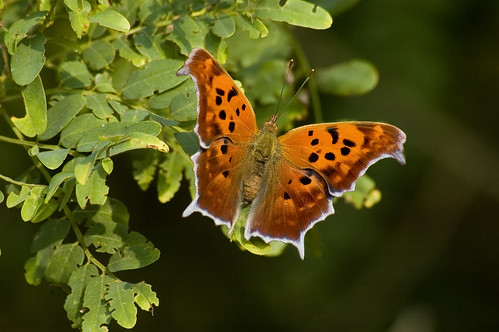
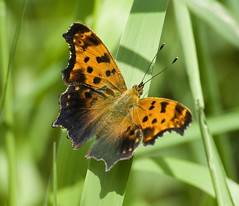
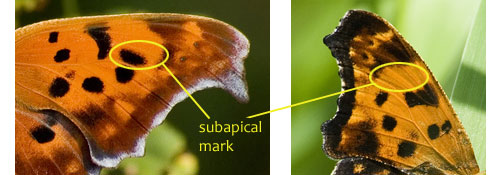

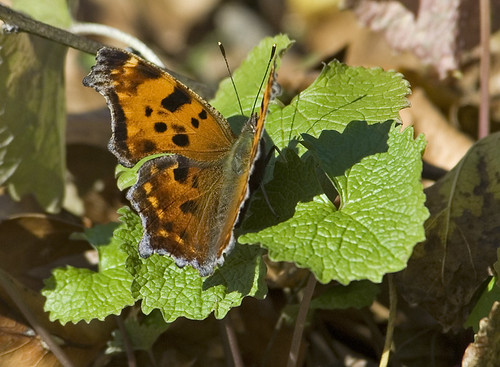
Such a stunning post Marty! You did a wonderful job in explain the differences!
Thanks, Tom – I’ll be be trying to get more up in the near future.